Cividale del Friuli
- Maria Scuor
- Sep 7, 2024
- 7 min read
Updated: Nov 10, 2024
Italiano sotto ogni sezione
Our next stop on our day out with Giorgio, Ursela and Mariasole was Cividale del Friuli. Here we met up with cousin Fausto as well and first had lunch, then explored the sights of the city, the monastery and cathedral.
Cividale del Friuli also known as Cividât in Friulano and Čedad in Slovenian, is an Italian municipality in Friuli-Venezia Giulia with about 11,000 inhabitants. In 50 BC, the Romans built a fort, which traditions indicate Julius Caesar transformed it into a forum (market) and changed the name to “Forum Lulii”. In 568 the Lombards, of Scandinavian origin, came and elected the city their capital and named it Civitas Fori Iulii. When the Patriarchal State of Friuli was founded in 1077, Cividale was chosen as the capital.
Cividale was the main political and commercial centre of Friuli, competing with Udine in the 13th century. There was a rise of monasteries, convents, palaces and towers because of the important families that resided there. However, in 1419, the internal struggles of Friuli were very intense that Venice decided to invade the region. Cividale was the first to surrender to the Serenissima (Republic of Venice).
Like many other Italian cities, Cividale was ruled by many nations or people. Including Napoleon who signed the Treaty of Campofomido in 1797 with Austria and Cividale became part of the Habsburg Empire. After the Napoleonic Wars in 1803 – 1815 it became part of the Lombard-Venetian Kingdom, until it ceded to the Kingdom of Italy in 1866. Of course, there were the World Wars and other clashes however this Medieval city kept fighting through them all and is today a beautiful city full of history.
We started with a walk in the historic centre then had lunch at Al Cervo D’oro, which was of course pizza and a beer. It was delicious and I totally recommend the restaurant if you are in the area. We visited Saint Mary Monastery before having an ice cream.
The Monastery dates back to the 7th century AD where the Benedictine Sisters practiced the rule of St. Benedict, living a balanced life of prayer, work, simplicity, hospitality and service. The building went through many additions and restorations since it’s conception. Today’s building dates back to about 1511.
The cloister is organized in a irregular shape and frescoed by Francesco Colussi in 1785 and consists of round arches with cross vaults supported by circular stone. On the south side is the oldest masonry structures, which partly incorporates the Lombard Temple.
In 1841, the building was entrusted to the Ursuline Sisters, a Roman Catholic religious order of women, dedicated exclusively to the education of girls and they lived there until 1999. Now it is a museum where we can transcend into the past of what life would have been like in the monastery. They also had an art show being exposed there when we visited.
Here is a TikTok video of the sights and Saint Mary Monastery we saw in Cividale - Ecco un video TikTok delle attrazioni e del Monastero di Santa Maria che abbiamo visto a Cividale
Cividale Sights - Attrazione di Cividale
Monastery of Santa Maria in Valle / Longobard Temple - Monastero di Santa Maria in Valle / Tempietto Longobardo
La nostra prossima tappa della nostra giornata con Giorgio, Ursela e Mariasole è stata Cividale del Friuli. Qui ci siamo incontrati anche con il cugino Fausto e prima abbiamo pranzato, poi abbiamo esplorato le bellezze della città, il monastero e la cattedrale.
Cividale del Friuli conosciuta anche come Cividât in friulano e Čedad in sloveno, è un comune italiano del Friuli-Venezia Giulia con circa 11.000 abitanti. Nel 50 a.C., i Romani costruirono un fortilizio, che secondo le tradizioni Giulio Cesare lo trasformò in un foro (mercato) e cambiò il nome in "Forum Lulii". Nel 568 arrivarono i Longobardi, di origine scandinava, che elessero la città loro capitale e la chiamarono Civitas Fori Iulii. Quando nel 1077 fu fondato lo Stato Patriarcale del Friuli, Cividale fu scelta come capitale.
Cividale era il principale centro politico e commerciale del Friuli, in competizione con Udine nel XIII secolo. C'era un aumento di monasteri, conventi, palazzi e torri a causa delle importanti famiglie che vi risiedevano. Tuttavia, nel 1419, le lotte interne del Friuli erano molto intense e Venezia decise di invadere la regione. Cividale era la prima ad arrendersi alla Serenissima.
Come molte altre città italiane, Cividale è stata governata da molte nazioni o popoli. Compreso Napoleone che firmò il Trattato di Campofomido nel 1797 con l'Austria e Cividale entrò a far parte dell'Impero Asburgico. Dopo le guerre napoleoniche del 1803 – 1815 entrò a far parte del Regno Lombardo-Veneto, fino a quando non fu ceduta al Regno d'Italia nel 1866. Certo, ci sono state le guerre mondiali e altri scontri, ma questa città medievale ha continuato a combattere attraverso tutti loro ed è oggi una bellissima città piena di storia.
Abbiamo iniziato con una passeggiata nel centro storico e in piazza del duomo, poi abbiamo pranzato da Al Cervo D'oro, che ovviamente era pizza e birra. Era delizioso e consiglio vivamente il ristorante se siete in zona. Abbiamo visitato il Monastero di Santa Maria prima di prendere un gelato.
Il Monastero risale al VII secolo d.C. dove le Suore Benedettine praticavano la regola di San Benedetto, vivendo una vita equilibrata di preghiera, lavoro, semplicità, ospitalità e servizio. L'edificio ha subito molte aggiunte e restauri sin dalla sua concezione. L'edificio odierno risale al 1511 circa.
Il chiostro è organizzato in forma irregolare e affrescato da Francesco Colussi nel 1785 ed è costituito da archi a tutto sesto con volte a crociera sorrette da pietre circolari. Sul lato sud si trova la più antica struttura in muratura, che ingloba in parte il Tempietto longobardo.
Nel 1841 l'edificio fu affidato alle Suore Orsoline, un ordine religioso femminile cattolico romano, dedito esclusivamente all'educazione delle ragazze e vi abitò fino al 1999. Ora è un museo dove possiamo trascendere nel passato di come sarebbe stata la vita nel monastero. Avevano anche una mostra d'arte esposta lì quando l'abbiamo visitata.
Cividale Cathedral
The Cathedral or Duomo is dedicated to Santa Maria Assunta and was built in the 15th century over a pre-existing church that dates back to the 8th century. The first church was hit by two earthquakes and was severely damaged by the one in 1364, however, it wasn’t until the middle of 15th century that the reconstruction of the sacred building in Venetian Gothic style was entrusted to Bartolomeo delle Cisterne. The architect died in 1480 and construction remained unfinished with columns collapsing in 1502.
A short time after that the reconstruction was entrusted to Pietro Lombardo who built the current cathedral in a mixed Gothic-Venetian and Renaissance style and Lomardo died before the work was finished, on May 9, 1529 the Cathedral was consecrated even though all the work didn’t ge finished until 1549. At the end of the 18th century, the architects Giorgio assari and Bernardino Maccaruzzi carried out a large internal renovation. In June 1909 Pope Pius X elevated it to the rank of minor basilica.
The interior is divided into three naves: the central one with a barrel vault, while the two lateral ones have a cross vault. It has an elevated presbytery. The right nave features a small door to enter the Christian Museum. Here you will to see two real masterpieces of the Lombard period: the Ara di Ratchis (the duke Ratchis' altar) and the Callisto's Baptistry with its elegant octagonal, arched structure.
On the internal wall of the facade, just above the main portal, is the equestrian monument of Marcantonio di Manzano, a Cividalese leader belonging to the noble di Manzano family, who died heroically in 1617 during the siege of Gradisca. The sculpture, in lacquered wood, was commissioned by the people of Cividale in 1621. The beautiful wooden crucifix on the left nave is from the 13th century.
Every year on January 6th, residents of Cividale celebrate the Messa dello Spadone (Mass of the Broadsword). Marquard von Randeck, Patriarch of Aquileia, entered Cividale del Friuli in 1366. It was an event of great prestige for the town. The entire community marked the event with sumptuous honours. Tradition has it that Marquard, the spiritual and temporal head of the patriarchate of Aquileia, took possession of Cividale and its territory and introduced the Mass of the Great Sword, a ceremony borrowed from the Germanic world that combined liturgical forms of the ancient Church of Aquileia-Cividale (12th century) with political and civil rituals of imperial origin. Since that distant 1366, the rite has been repeated every year on the Feast of the Epiphany. Since 1984, at the end of the liturgical celebration, hundreds of figures re-enact the solemn entry of Patriarch Marquard into Cividale.
Duomo di Cividale
La Cattedrale o Duomo è dedicata a Santa Maria Assunta e fu costruita nel XV secolo su una chiesa preesistente che risale all'VIII secolo. La prima chiesa era colpita da due terremoti e fu gravemente danneggiata da quello del 1364, ma era solo a metà del XV secolo che la ricostruzione dell'edificio sacro in stile gotico veneziano fu affidata a Bartolomeo delle Cisterne. L'architetto morì nel 1480 e la costruzione rimase incompiuta con le colonne che crollarono nel 1502.
Poco tempo dopo la ricostruzione era affidata a Pietro Lombardo che costruì l'attuale cattedrale in stile misto gotico-veneziano e rinascimentale e Lomardo morì prima che i lavori fossero terminati, il 9 maggio 1529 la cattedrale fu consacrata anche se tutti i lavori furono terminati solo nel 1549. Alla fine del XVIII secolo, gli architetti Giorgio Assari e Bernardino Maccaruzzi realizzarono una grande ristrutturazione interna. Nel giugno del 1909 papa Pio X la elevò al rango di basilica minore.
L'interno è diviso in tre navate: quella centrale con volta a botte, mentre le due laterali hanno una volta a crociera. Ha un presbiterio rialzato. La navata destra presenta una piccola porta per accedere al Museo Cristiano. Qui potrete vedere due veri e propri capolavori del periodo longobardo: l'Ara di Ratchis e il Battistero di Callisto con la sua elegante struttura ottagonale ad archi.
Sulla parete interna della facciata, appena sopra il portale principale, si trova il monumento equestre di Marcantonio di Manzano, condottiero cividalese appartenente alla nobile famiglia di Manzano, morto eroicamente nel 1617 durante l'assedio di Gradisca. La scultura, in legno laccato, fu commissionata dal popolo di Cividale nel 1621. Il bellissimo crocifisso ligneo sulla navata sinistra è del XIII secolo.
Ogni anno, il 6 gennaio, i cittadini di Cividale celebrano la Messa dello Spadone. Marquard von Randeck, patriarca di Aquileia, entrò a Cividale del Friuli nel 1366. Era un evento di grande prestigio per la città. L'intera comunità ha celebrato l'evento con sontuosi onori. La tradizione vuole che Marquardo, capo spirituale e temporale del patriarcato di Aquileia, si impossessò di Cividale e del suo territorio e introdusse la Messa della Grande Spada, una cerimonia mutuata dal mondo germanico che combinava le forme liturgiche dell'antica Chiesa di Aquileia-Cividale (XII secolo) con rituali politici e civili di origine imperiale. Da quel lontano 1366, il rito si ripete ogni anno in occasione della Festa dell'Epifania. Dal 1984, al termine della celebrazione liturgica, centinaia di figuranti rievocano l'ingresso solenne del Patriarca Marquardo a Cividale.












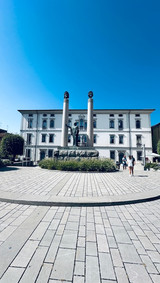













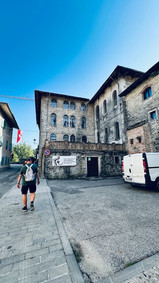





























































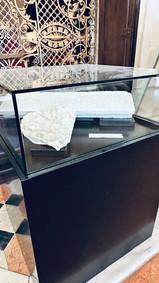





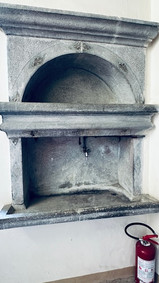






















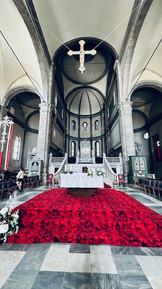
























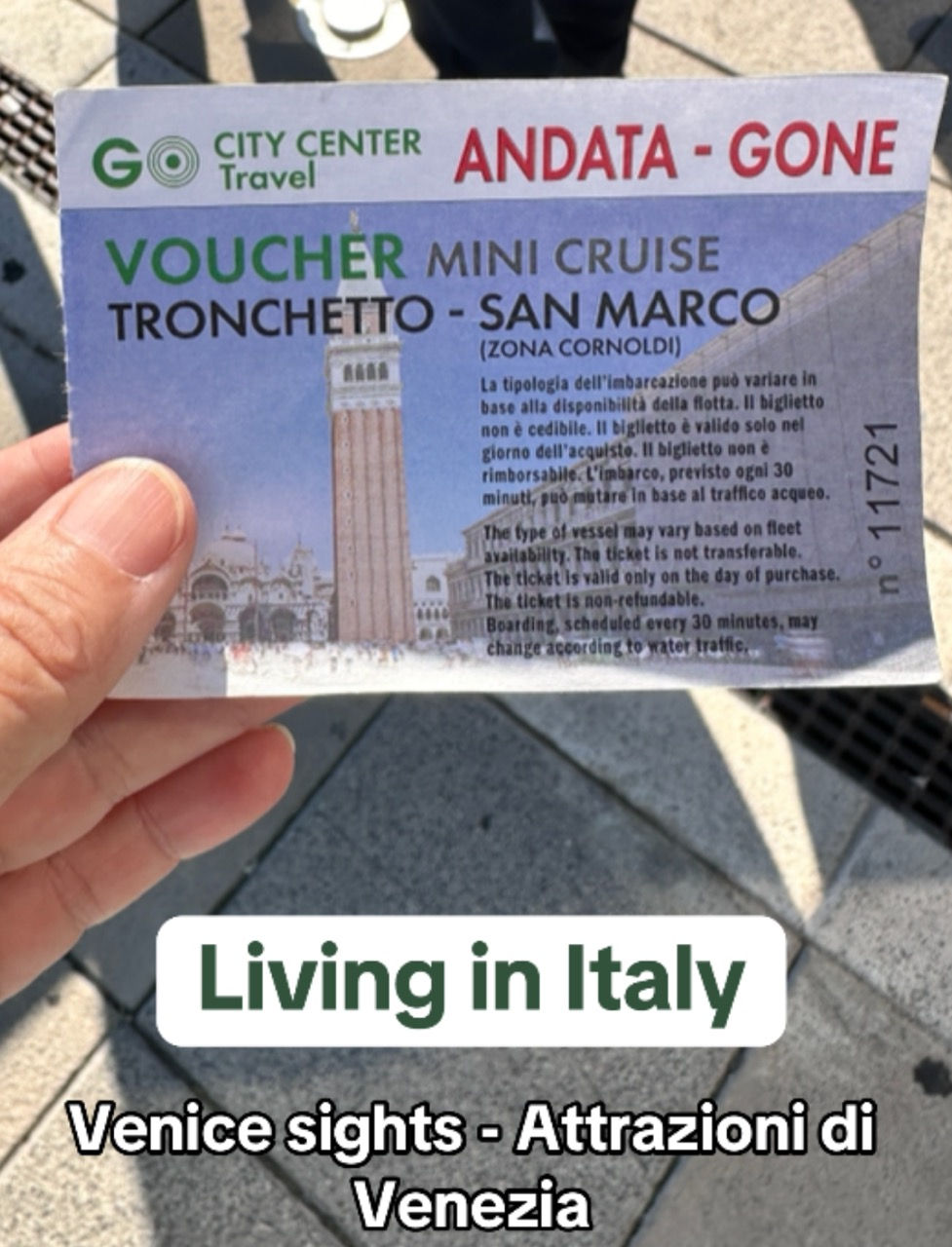


Comments